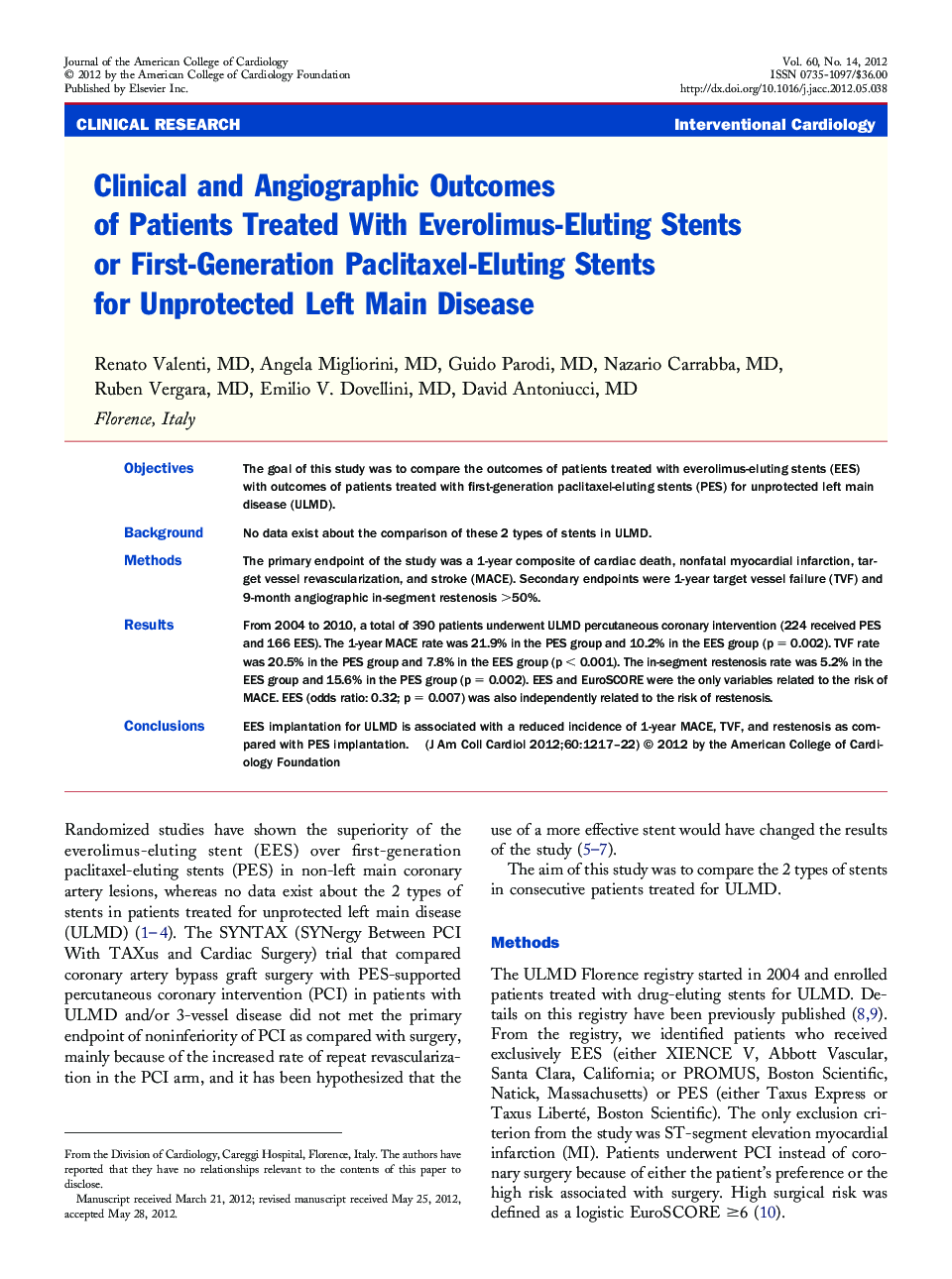| Article ID | Journal | Published Year | Pages | File Type |
|---|---|---|---|---|
| 2946984 | Journal of the American College of Cardiology | 2012 | 6 Pages |
ObjectivesThe goal of this study was to compare the outcomes of patients treated with everolimus-eluting stents (EES) with outcomes of patients treated with first-generation paclitaxel-eluting stents (PES) for unprotected left main disease (ULMD).BackgroundNo data exist about the comparison of these 2 types of stents in ULMD.MethodsThe primary endpoint of the study was a 1-year composite of cardiac death, nonfatal myocardial infarction, target vessel revascularization, and stroke (MACE). Secondary endpoints were 1-year target vessel failure (TVF) and 9-month angiographic in-segment restenosis >50%.ResultsFrom 2004 to 2010, a total of 390 patients underwent ULMD percutaneous coronary intervention (224 received PES and 166 EES). The 1-year MACE rate was 21.9% in the PES group and 10.2% in the EES group (p = 0.002). TVF rate was 20.5% in the PES group and 7.8% in the EES group (p < 0.001). The in-segment restenosis rate was 5.2% in the EES group and 15.6% in the PES group (p = 0.002). EES and EuroSCORE were the only variables related to the risk of MACE. EES (odds ratio: 0.32; p = 0.007) was also independently related to the risk of restenosis.ConclusionsEES implantation for ULMD is associated with a reduced incidence of 1-year MACE, TVF, and restenosis as compared with PES implantation.
